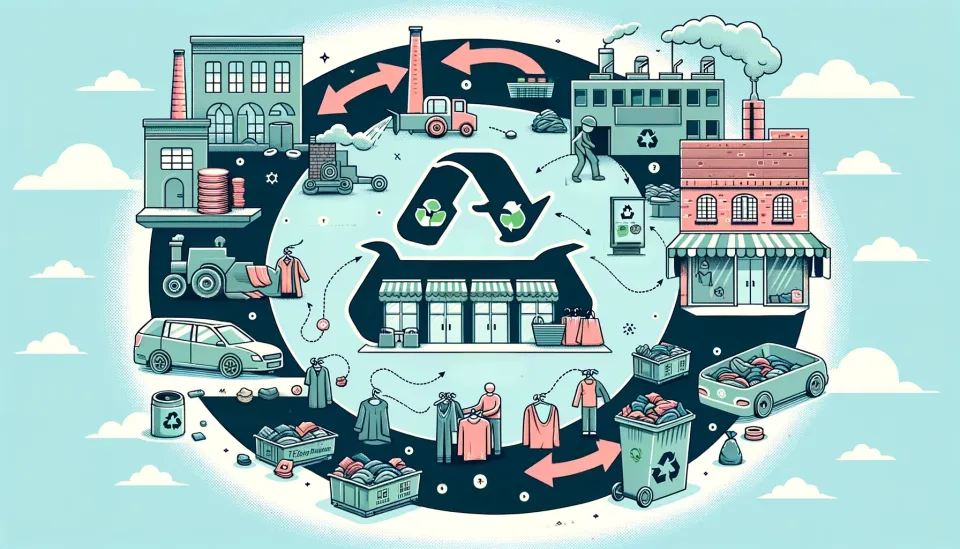Preparing for Extended Producer Responsibility: A Guide for Apparel Manufacturers

In recent years, the global push towards sustainability has accelerated, bringing new regulations and expectations for industries worldwide. Among these, the new plastic treaty is a significant step forward. Initially focusing on electronics manufacturers, this treaty is grounded in the principle of Extended Producer Responsibility (EPR), where producers are accountable for the entire lifecycle of their products, especially their end-of-life disposal.
However, apparel manufacturers should not overlook the implications of this treaty. With Australia alone contributing around 200,000 tonnes of clothing to landfill annually, the fashion industry must prepare for the potential expansion of EPR regulations to include apparel. Here’s how apparel manufacturers can proactively adapt to these evolving standards.
Understanding Extended Producer Responsibility (EPR)
Extended Producer Responsibility is a policy approach that holds producers responsible for the post-consumer stage of a product’s lifecycle. This includes take-back, recycling, and final disposal. The goal is to incentivize manufacturers to design more sustainable products, reduce waste, and increase recycling rates.
For apparel manufacturers, this means taking responsibility for what happens to their clothing after consumers are done with them. This can involve setting up systems for collecting used garments, investing in recycling technologies, and designing products that are easier to recycle.
Steps for Apparel Manufacturers to Prepare
- Design for Durability and Recyclability
- Durability: Create high-quality products that last longer, reducing the frequency with which consumers need to buy replacements. Durable products not only satisfy customers but also minimize waste.
- Recyclability: Use materials that are easy to recycle. Avoid blends that complicate recycling processes and opt for mono-materials or easily separable components.
- Implement Take-Back Programs
- Collection Systems: Establish programs that allow customers to return old garments. These can be in-store drop-off points, mail-back systems, or partnerships with recycling organizations.
- Incentives: Encourage participation by offering discounts or loyalty points to customers who return their old clothes.
- Invest in Recycling Technologies
- Mechanical Recycling: Traditional methods that shred fabrics into fibers for reuse.
- Chemical Recycling: More advanced technologies that break down materials at the molecular level to create new fibers, offering higher quality and more versatile outputs.
- Collaborate with Stakeholders
- Suppliers: Work with material suppliers to ensure the sustainability of the raw materials used.
- Retailers: Partner with retailers to facilitate the collection of used garments.
- Governments and NGOs: Engage with policy makers and environmental organizations to stay ahead of regulatory changes and to contribute to the development of practical solutions.
- Educate Consumers
- Awareness Campaigns: Run campaigns to educate consumers on the importance of recycling and how they can participate in take-back programs.
- Transparency: Provide clear information about the recyclability of your products and the steps you are taking to reduce environmental impact.
- Monitor and Report Progress
- Tracking Systems: Implement systems to track the lifecycle of products, from production to end-of-life disposal.
- Reporting: Regularly report on sustainability efforts and progress towards EPR goals. Transparency builds trust and demonstrates commitment to sustainability.
The Benefits of Proactive EPR Compliance
- Regulatory Readiness: By preparing for EPR regulations now, apparel manufacturers can avoid the last-minute scramble to comply with new laws, reducing potential legal and financial risks.
- Brand Loyalty: Consumers are increasingly eco-conscious. Demonstrating a commitment to sustainability can enhance brand loyalty and attract new customers.
- Cost Savings: While there is an initial investment in sustainable practices and technologies, the long-term savings from reduced waste and increased material efficiency can be significant.
- Industry Leadership: Early adopters of EPR practices will be seen as leaders in the industry, setting standards for others to follow.
Conclusion
The shift towards Extended Producer Responsibility is a critical step in the global effort to create a more sustainable future. Apparel manufacturers have a significant role to play in this transition. By designing for durability and recyclability, implementing take-back programs, investing in recycling technologies, collaborating with stakeholders, educating consumers, and monitoring progress, the apparel industry can reduce its environmental impact and prepare for a future where sustainability is not just a goal but a regulatory requirement.
The time to act is now. Let’s lead the way towards a sustainable future, one garment at a time.
References
- United Nations Environment Programme (UNEP). (2022). Integrating Extended Producer Responsibility (EPR) within the International Treaty on Plastics Pollution. Available at: UNEP Document (Accessed: May 2024).
- USAID Clean Cities, Blue Ocean Program. (2023). Extended Producer Responsibility: A System for a Circular Economy. Available at: Urban Links (Accessed: May 2024).
- World Wildlife Fund (WWF). (2022). Extended Producer Responsibility: An Evolving Landscape. Available at: WWF Report (Accessed: May 2024).
- Organisation for Economic Co-operation and Development (OECD). (2021). Extended Producer Responsibility (EPR) and the Circular Economy. Available at: OECD Report (Accessed: May 2024).